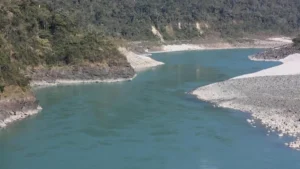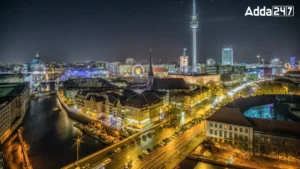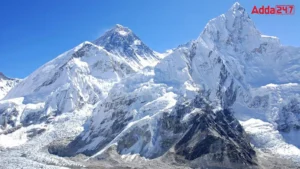India’s freedom was the result of the hard work, courage, and sacrifices of many great leaders and revolutionaries. From Mahatma Gandhi’s non-violence to Bhagat Singh’s bravery, each played a vital role in shaping our nation’s future. This GK quiz on freedom fighters will test your knowledge and help you learn interesting facts about the heroes who fought for India’s independence.
Freedom Fighters of India
India’s freedom fighters were pivotal in the country’s struggle for independence from British rule. Key figures include Mahatma Gandhi, who led non-violent movements, and Bhagat Singh, known for his revolutionary activities. Other notable fighters include Jawaharlal Nehru, Sardar Patel, and Subhas Chandra Bose. Their collective efforts and sacrifices played a crucial role in achieving India’s independence in 1947, shaping the nation’s history.
GK Quiz Related to Freedom Fighters of India
Test your knowledge with this GK quiz on India’s freedom fighters! Dive into questions about key figures like Mahatma Gandhi, Bhagat Singh, and Subhas Chandra Bose, and explore their crucial roles in India’s struggle for independence.
Q1. Which freedom fighter is famously known for his role in the Jallianwala Bagh massacre?
(a) Lala Lajpat Rai
(b) Bhagat Singh
(c) Udham Singh
(d) Rajguru
S1. Ans. (c)
Sol. Shaheed Udham Singh was an Indian revolutionary belonging to the Ghadar Party, who is well known for the assassination of Michael O’Dwyer on March 13th 1940. Michael O’Dwyer was the lieutenant governor of Punjab at the time of the Jallianwala Bagh massacre in Amritsar.
Q2. Who founded the Hindustan Republican Association and written the book ‘Bandi Jeewan’?
(a) Bhagat Singh
(b) C. Gopalachari
(c) Khudiram Bose
(d) Sachindra Nath Sanyal
S2. Ans. (d)
Sol. Sachindra Nath Sanyal founded the Hindustan Republican Association. He was involved in the Ghadar conspiracy and sentenced to life for his involvement. He was deported to Cellular Jail in the Andaman and Nicobar Islands. There he wrote the book titled Bandi Jeevan in 1922.
Q3. Who had been sent to the dreaded Cellular Jail in Port Blair for his involvement in Kakori train robbery?
(a) Ram Prasad Bismil
(b) Jatin Das
(c) Sachindra Bakshi
(d) Batukeshwar Dutt
S3. Ans. (c)
Sol. The following revolutionaries were sentenced to deportation to Cellular Jail in Port Blair, Andaman & Nicobar Islands: Sachindra Bakshi. Shachindra Nath Sanyal.
Q4. Who among the following fasted unto death in the Lahore Jail as a protest against the poor treatment accorded to politician prisoners?
(a) Jatin Das
(b) Batukeshwas Dutt
(c) Mahatma Gandhi
(d) Khudiram Bose
S4. Ans. (a)
Sol. Jatindra Nath Das breathed his last on September 13, 1929, after a 63-day-long fast for protecting political prisoners from injustice. Only 25 years old at the time, Das had undertaken this hunger strike along with Shaheed Bhagat Singh and other imprisoned freedom fighters in the Lahore Central Jail.
Q5. Which three freedom fighters were hanged for their role in the Kakori Train Conspiracy of 1925?
(a) Roshan Singh, Ram Prasad Bismil, Ashfaqulla Khan
(b) Bhagat Singh, Sukhdev, Rajguru
(c) Sardar Udham Singh, Ram Prasad Bismil, Ashfaqulla Khan
(d) Ram Prasad Bismil, Bhagat Singh, Ashfaqulla Khan
S5. Ans. (a)
Sol. Revolutionaries involved in the Kakori Conspiracy Case were hanged. What happened? On 19 December 1927, revolutionary freedom fighters Ram Prasad ‘Bismil’, Ashfaqulla Khan and Thakur Roshan Singh were hanged to death by the British government for their involvement in the Kakori train robbery case.
Q6. Who was known as ‘Lokhitwadi’?
(a) Gopal Hari Deshmukh
(b) Gopal Krishna Gokhale
(c) Pherozshah Mehta
(d) Bal Gangadhar Tilak
S6. Ans. (a)
Sol. Gopal Hari Deshmukh composed articles on social change in Maharashtra in the weekly paper Prabhakar using the pen name ‘Lokhitwadi’. Hence, he came to be known by that pen name. Gopal Hari Deshmukh was an Indian activist, thinker, social reformer and an important figure of the Social Reform Movement in Maharashtra.
Q7. In which language was the newspaper ‘Kesari’ published, started by Bal Gangadhar Tilak?
(a) Bengali
(b) Hindi
(c) English
(d) Marathi
S7. Ans. (d) Marathi
Sol. Kesari is a Marathi newspaper which was founded on 4 January 1881 by Lokmanya Bal Gangadhar Tilak, a prominent leader of the Indian Independence movement.
Q8. Which British officer was shot by Udham Singh?
(a) Colonel Reginald Dyer
(b) John Saunders
(c) Sir Michael O’Dwyer
(d) None of these
S8. Ans. (a)
Sol. O’Dwyer, aged 75, was shot dead at a joint meeting of the East India Association and the Central Asian Society (now Royal Society for Asian Affairs) in Caxton Hall in Westminster, London, on 13 March 1940, by Indian revolutionary, Udham Singh, in retaliation for the massacre in Amritsar.
Q9. Which newspaper was started by Motilal Nehru in 1919?
(a) Young India
(b) The Independent
(c) Voice of India
(d) The Leader
S9. Ans. (b)
Sol. The Independent was an Allahabad based newspaper begun by Motilal Nehru in 1919. The paper closed down under British repression two years later. The Independent was started on 5 February 1919 with the primary aim of countering the moderate political line adopted by the then leading Allahabad daily The Leader.
Q10. Which revolutionary leader was known as ‘The Lion of Punjab’?
(a) Bhagat Singh
(b) Lala Lajpat Rai
(c) Chandrashekhar Azad
(d) Rajguru
S10. Ans. (b)
Sol. Lala Lajpat Rai is known as the Lion of Punjab. He was an independence activist who played a crucial role in the Independence movement.



 Which Glacier is the Source of the Brahm...
Which Glacier is the Source of the Brahm...
 Which City of Germany is Known as the Gr...
Which City of Germany is Known as the Gr...
 Which Peak is Known as the Five Treasure...
Which Peak is Known as the Five Treasure...







